- Industry insights
- People in tech
- Tech trends at BEECODED
- 30 Apr 2025
What is text analytics in AI?
Text analytics, an artificial intelligence technology that we'll explore in this guide.
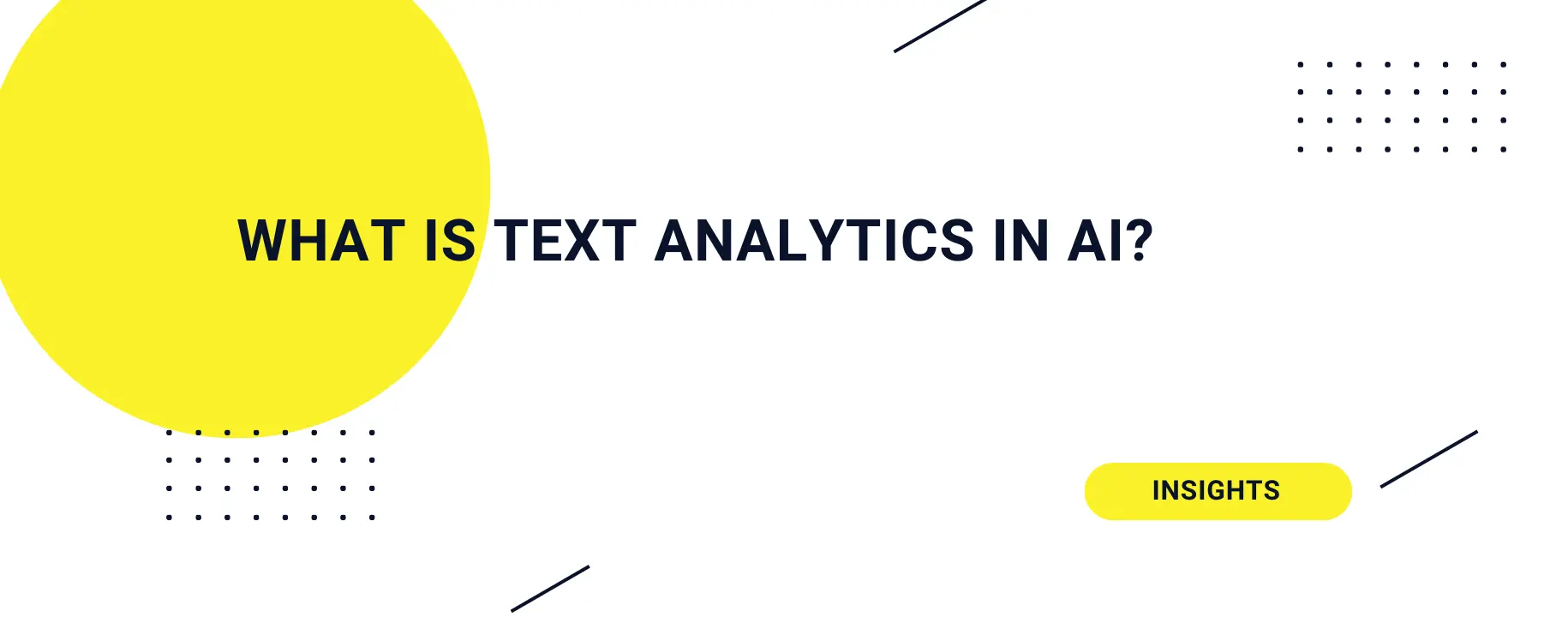
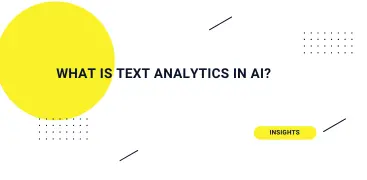
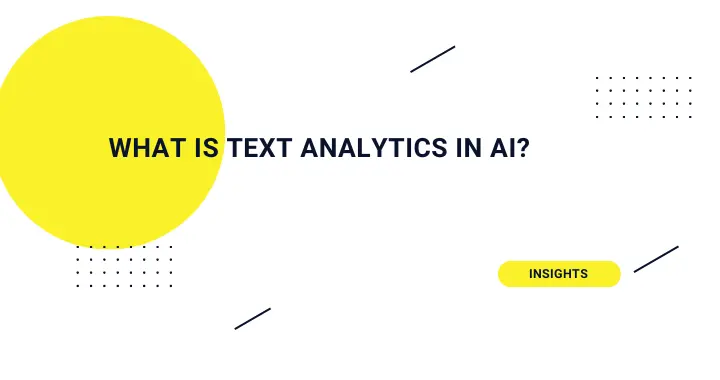
Table of contents
- Introduction
- What is text analytics?
- How does text analytics work?
- Text analytics vs text-dependent analysis
- Real-world use cases of text analytics
- Benefits of using text analytics in AI
- Text analytics tools and platforms
- Text analytics in research and academia
- Want to implement text analytics in your AI product?
Contributors

Introduction
If you run an active online business, you’re probably familiar with the avalanche of textual information that needs to be processed daily: customer emails, reviews, social media comments, etc. So, how do you turn all that into useful insights without spending hours reading everything one by one?
The answer is text analytics, an artificial intelligence technology that we’ll explore in this guide. The “engine” behind text analytics is NLP, a concept we have discussed in previous articles. We recommend reading NLP examples first to get a better understanding before diving into today’s article.
What is text analytics?
Text analytics, also known as text mining or text analysis, is the process of extracting valuable information from unstructured text, such as customer reviews or social media comments.
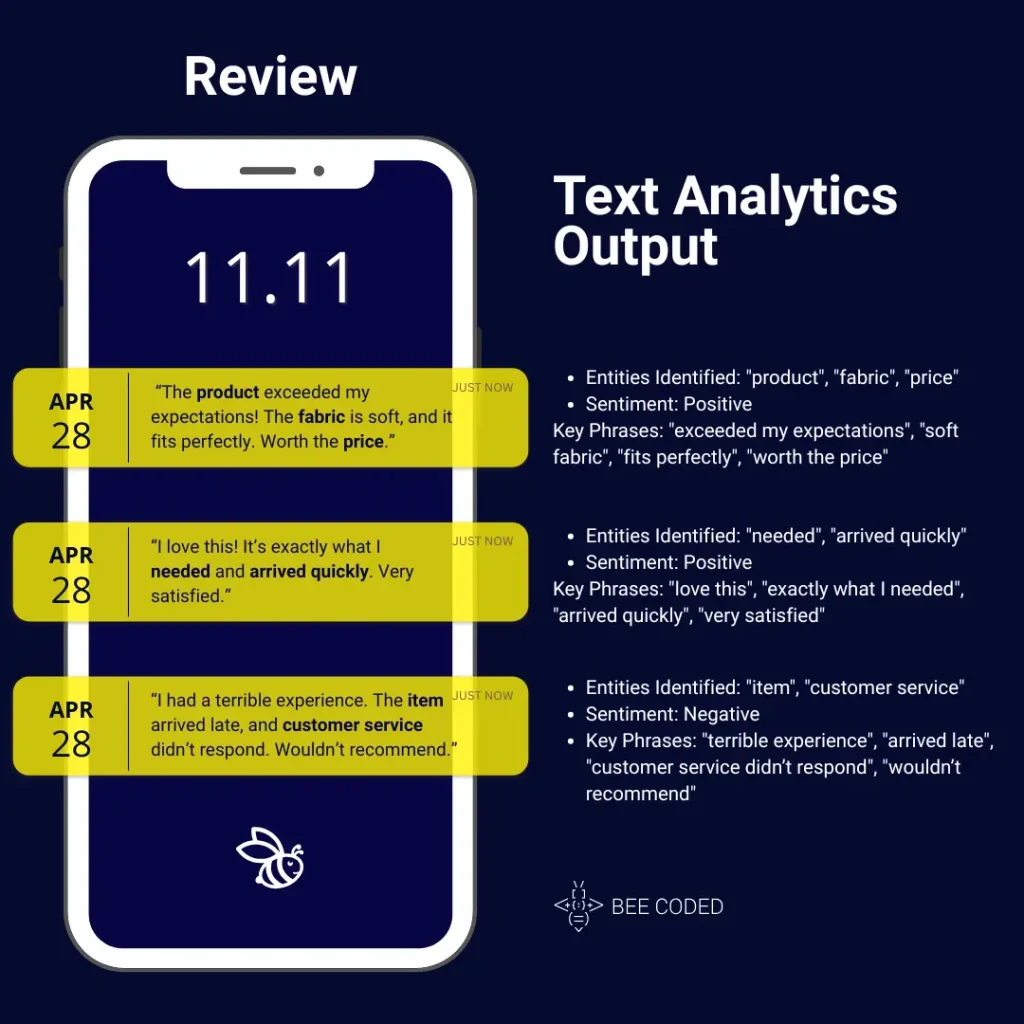
Sometimes, the concept of text analytics can be confused with text classification.
Text classification is actually a component of text analytics – more specifically, it is the process by which a text is automatically categorized into a certain category: positive/negative, spam/not spam, etc.
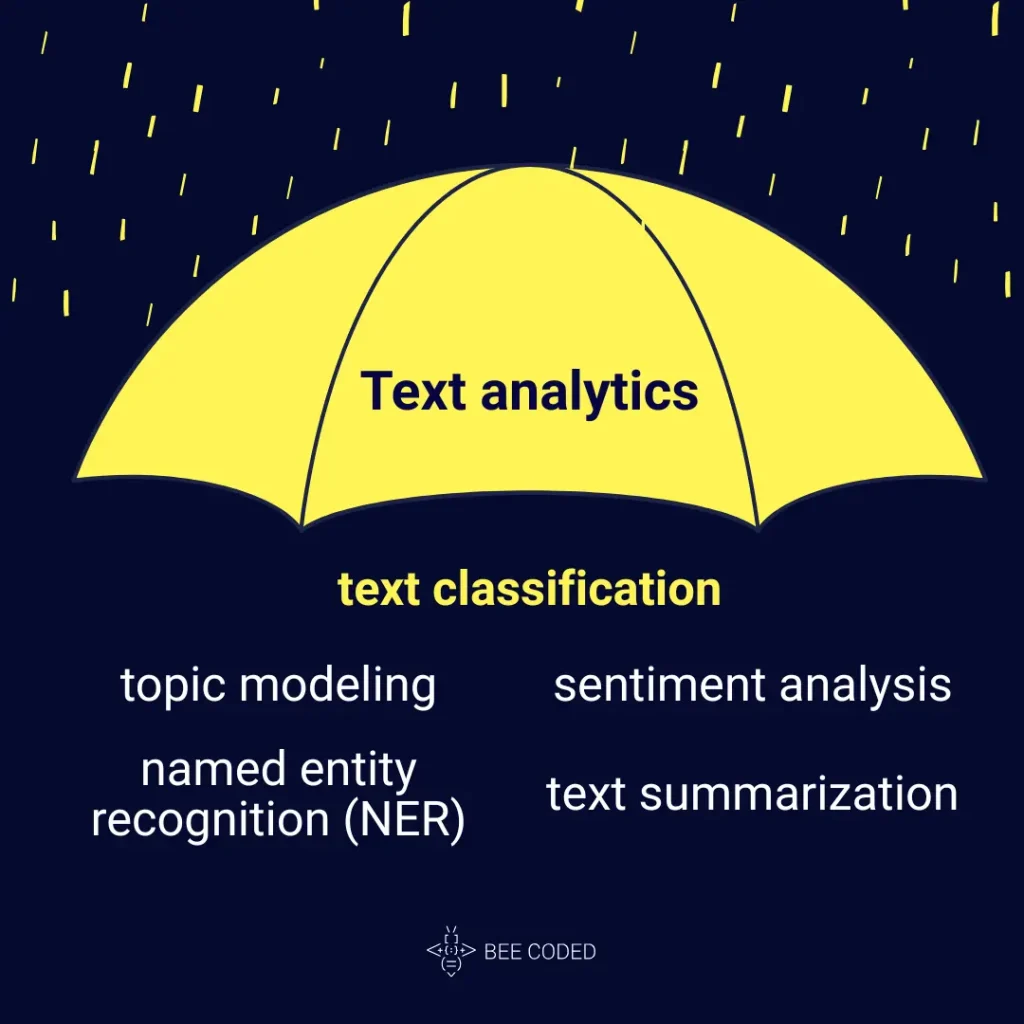
How does text analytics work?
Imagine this process taking place along a continuum. Raw text goes in at one end, and insights come out at the other. Here’s what the main steps look like:
- Pre-processing
The text is cleaned by removing common words (e.g. “and”, “but”), breaking it into chunks (tokenization), and normalizing it (lowercase, removing unnecessary marks).
- Syntactic analysis
The sentence structure is identified to determine the subject, verb, and complement, in order to understand “who does what.”
- Semantic analysis
This is where the serious stuff starts: detecting intentions, emotions, and entities.
- Clustering & Sentiment Analysis
Texts are clustered by theme, and algorithms analyze the overall tone: is it an enthusiastic review or a hidden complaint, etc.
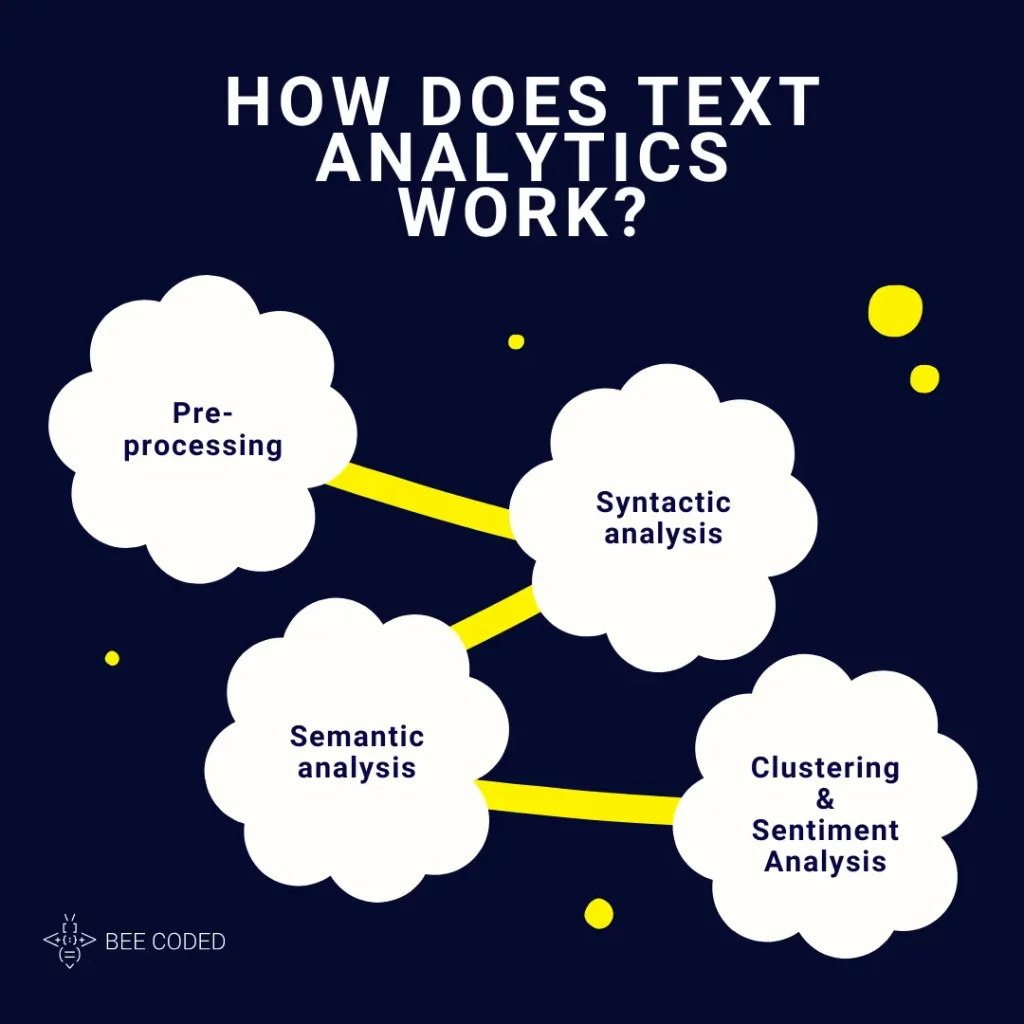
Text analytics vs text-dependent analysis
Another common confusion is between text analytics and text-dependent analysis. See the table below for the main differences so you can avoid making this mistake:
| Aspect | Text analytics | Text-dependent analysis |
| What it analyzes | Unstructured texts (e.g., reviews, comments, emails) to extract valuable insights. | Responses based on a specific text (e.g., educational tests, interview answers). |
| Where it’s used | Business, marketing, social media, fraud detection, and customer feedback. | Education, psychological tests, and biometrics. |
| Main goal | Extract insights, detect emotions, and find patterns. | Evaluate comprehension or responses related to a specific text. |
| Examples | Analyzing customer reviews to understand sentiment or product feedback. | Educational tests or interviews based on a provided text. |
Real-world use cases of text analytics
Let’s see where text analytics is being used concretely:
- Analyzing customer feedback from reviews and support chats.
- Brand monitoring on social media: to see what your reputation is among people
- Fraud detection: by analyzing suspicious emails.
- Open-ended surveys: understand open-ended answers without going through them one by one.
- Product optimization: see what works and what doesn’t based on textual feedback.
Benefits of using text analytics in AI
Do you have a SaaS application and wonder how text analytics is useful for your business? Here are some benefits:
Quick insights – you can quickly analyze customer feedback (reviews, chats) to identify your app’s strengths and areas for improvement.
Decision automation – you can automatically prioritize errors and customer requirements based on feedback analysis, saving time and resources.
Improved customer experience – you can identify user needs and improve your app, delivering a more personalized experience.
Personalized marketing campaigns – you can create targeted offers based on user feedback analysis, increasing marketing effectiveness.
Text analytics tools and platforms
- Microsoft Azure Text Analytics – easy to integrate into enterprise products.
- Google Cloud Natural Language – powerful, easy-to-use API.
- IBM Watson NLP – expert in semantic analytics.
- MonkeyLearn – friendly for non-technical teams.
All these tools use NLP (natural language processing) to understand meaning from text.
Text analytics in research and academia
If you are wondering, “What is text analysis in research?” it is an essential method used in various academic fields to interpret and extract information from written data.
For instance, text analysis is used in psychology to understand participants’ subjective thoughts and emotions. Moreover, in the social sciences, researchers analyze interviews to discover recurring themes or patterns that reflect people’s behaviors and attitudes. In addition, through text analytics, researchers can extract keywords that indicate the fears or desires of the groups in question. As a result, this method provides detailed insight into issues of social concern and helps build a deeper understanding of human behavior.
Want to implement text analytics in your AI product?
Looking to monitor feedback, analyze reviews, or develop advanced support systems? Our team delivers tailored solutions for your business needs.
Discover our services here.
Natural Language Processing (NLP) vs. Large Language Models (LLM): What’s the Difference?
10 NLP examples you use every day without realizing
12 Natural Language Processing techniques used to process text by data scientists